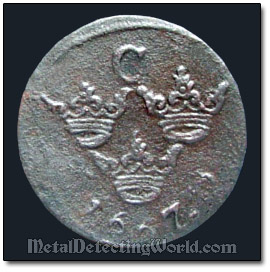Part I - Treasure Hunting at the Swedish Tavern Site, page 39
Digging Up More Swedish Artefacts and Coins
A nice bronze ring with a simple but unusual design unexpectedly showed up. Later, one treasure hunter from Tbilisi, Georgia, informed me that this was a ring designed for fist fighting. By arming each finger with such a ring, an effect, similar to the brass knuckles' one, could be achieved.
Bronze Fighting Ring, ca. 16th-17th Century
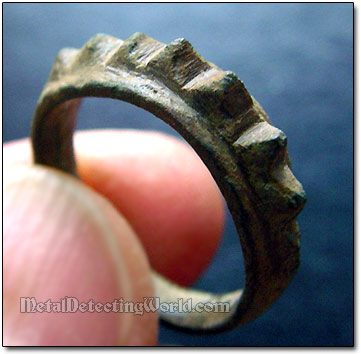
...Because the E-tracs's features and settings were identical to the Explorer's with which I had been well acquainted after eight years of using it, I knew how these settings individually affected the detector's performance. The current settings were moderate and would not make the E-Trac unstable... Another coin announced itself!
Reverse of My Coin Find #3 - 1/4 Öre
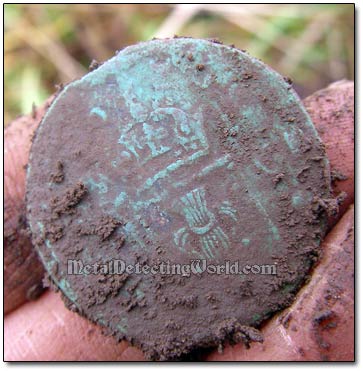
Shaped as a shield, a tiny strap end with a rivet on its back followed the coin find. It was impossible to determine what its design depicted even after cleaning.
Small Bronze Strap End, ca. 16th-17th Century

My next relic find was a bronze pot leg of a plain type, terminated in a triangular pointed foot. It would be impossible to know from which type of vessel - cauldron, skillet or ewer, this broken-off leg would have come.
In the past, the metal vessels had a much longer serviceable life than their cheaper counterparts made of pottery or wood. The metal vessels were repaired numerous times and handed down over a number of generations.
Broken-Off Bronze Pot Leg, ca. 17th Century, after Being Cleaned
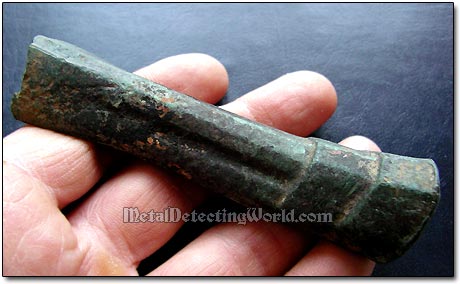
...The two settings that were directly responsible for the target audio response - Sounds and Response, had already stood the test of time. So I "crossed out" the rest of features that I was sure could not cause the faltering of signals...
My Coin Find #4
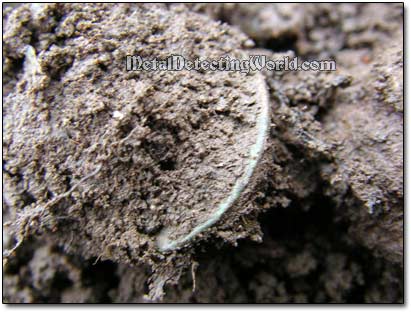
Obverse of 1667 1/6 Öre Coin
